26th August, 2025
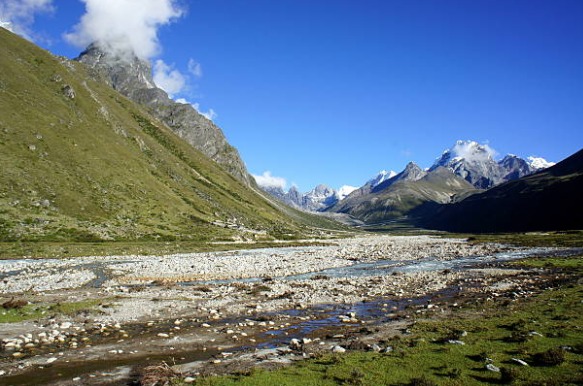
Jun 11, 2024
Lobuche Peak Climbing In March
- Introduction to Lobuche Peak
- Why Climb Lobuche Peak in March
- Climbing Route Overview
- Difficulty Level and Technicality
- Best Time to Climb Lobuche Peak
- Weather Conditions in March
- Temperature and Climate Expectations
- Day-by-Day Itinerary for March Climbing
- Essential Climbing Gear and Equipment
- Acclimatization and Altitude Sickness Prevention
- Physical Conditioning and Training Requirements
- Hiring a Guide or Joining a Group Expedition
- Cost and Budget Breakdown for the Climb
- Permits and Regulations for Climbing Lobuche Peak
- Accommodation Options in Kathmandu and Base Camp
- Food and Water Arrangements during the Climb
- Safety Measures and Emergency Protocols
- Environmental Impact and Responsible Climbing Practices
- Cultural Significance of Lobuche Peak to the Local Community
- Conclusion: Is Climbing Lobuche Peak in March Right for You?
- Lobuche Peak Climbing Packages
Climbing Lobuche Peak in March offers a compelling adventure amidst the awe-inspiring landscapes of the Everest region in Nepal. Standing at 6,119 meters (20,075 feet), Lobuche Peak presents a challenging yet achievable climb suitable for experienced mountaineers and adventurers seeking to test their skills in a pristine alpine environment.
March marks the transition from winter to spring in the Himalayas, presenting favorable climbing conditions on Lobuche Peak. The weather begins to warm up slightly, with daytime temperatures ranging from -10°C to -15°C at higher elevations. Clear skies often provide stunning views of nearby peaks like Everest, Lhotse, and Nuptse, enhancing the climbing experience.
While March typically sees reduced snowfall compared to earlier winter months, climbers should still prepare for cold temperatures and occasional snow showers. The mountain's slopes may be icy in the early morning and soften later in the day, requiring careful navigation and use of crampons and ice axes.
Successful ascent of Lobuche Peak in March requires thorough preparation and planning. Climbers typically begin their journey with a flight from Kathmandu to Lukla, followed by a trek through picturesque Sherpa villages like Namche Bazaar and Pangboche. This acclimatization trek helps climbers adjust to the increasing altitude and prepares them for the challenges ahead.
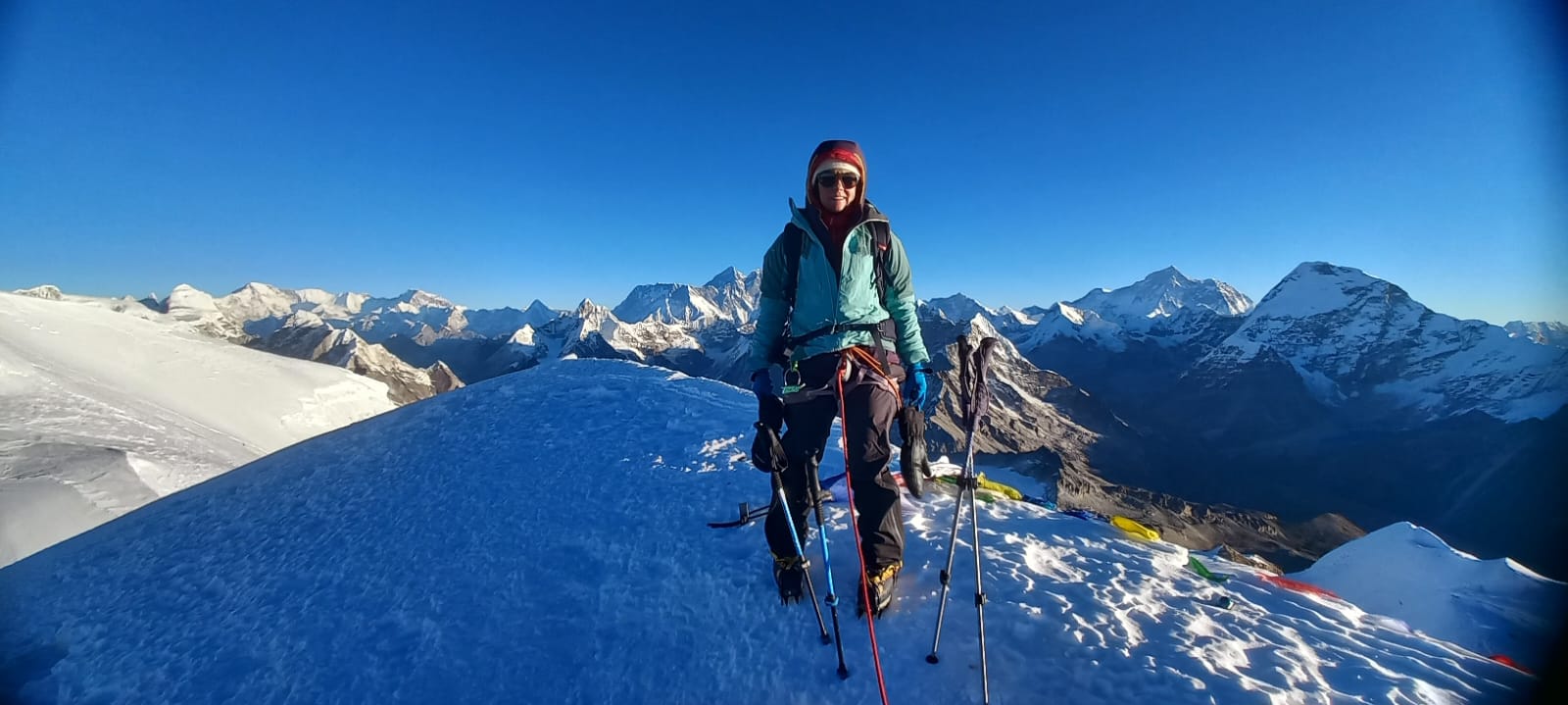
Three Peak Expedition
Embark on an unforgettable journey to the heart of the Himalayas as you conquer three majestic peaks: Mera Peak, Island Peak, and Lobuche Peak. This ultimate adventure combines technical climbing, bre...
Acquiring necessary permits through the Nepal Mountaineering Association (NMA) and ensuring travel insurance coverage are essential steps. Choosing experienced guides or joining guided expeditions enhances safety and logistical support throughout the climb.
The climbing itinerary for Lobuche Peak in March typically spans around 15 days, allowing for acclimatization and flexibility in case of adverse weather. After reaching Lobuche Base Camp, climbers ascend to High Camp for further acclimatization before making their summit push.
The route to Lobuche Peak involves technical sections requiring proficiency in glacier travel, ice climbing, and crevasse navigation. The final ascent to the summit offers breathtaking panoramic views of the surrounding Himalayan peaks, rewarding climbers for their perseverance and effort.
Safety measures during March climbs on Lobuche Peak include thorough equipment checks, adherence to climbing protocols, and regular communication with support teams. Emergency response plans for altitude sickness, injuries, and inclement weather ensure climbers are prepared for any contingencies.
Environmental conservation is paramount, with climbers practicing Leave No Trace principles by disposing of waste responsibly and respecting local customs. Supporting sustainable tourism initiatives and minimizing ecological impact help preserve the natural beauty and biodiversity of the Everest region.
Climbing Lobuche Peak in March presents an exhilarating opportunity to conquer a Himalayan summit amidst stunning scenery and challenging conditions. With proper preparation, experienced guidance, and a spirit of adventure, climbers can embark on a rewarding journey that combines physical challenge with cultural immersion in the heart of Nepal's iconic mountain range.
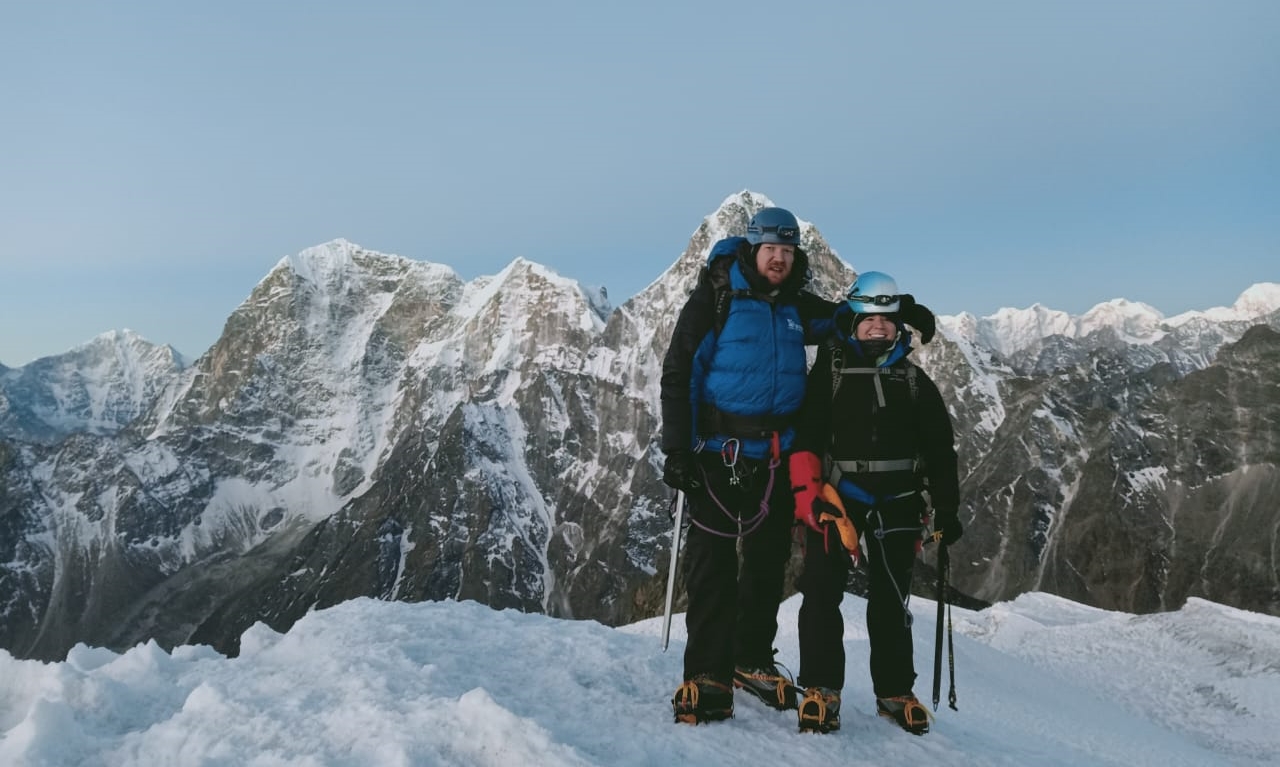
LOBUCHE PEAK CLIMBING
Lobuche East (6,119m/20,075ft), set in Nepal's stunning Khumbu on the Nepalese side of Everest.The best time to go trekking in Nepal is in Autumn (September-November) and in...
Introduction to Lobuche Peak
Lobuche Peak, situated in the Everest region of Nepal, stands as a prominent destination for mountaineers seeking a challenging yet achievable Himalayan summit. At an elevation of 6,119 meters (20,075 feet), Lobuche Peak offers stunning panoramic views of neighboring giants like Everest, Lhotse, and Nuptse. The peak is divided into two main summits: Lobuche East and Lobuche West, each presenting varying degrees of technical difficulty and adventure.
Why Climb Lobuche Peak in March
March presents an ideal window for climbing Lobuche Peak due to favorable weather conditions transitioning from winter to spring. The temperatures are relatively milder compared to the colder winter months, making for more comfortable climbing conditions. The days are generally clear, offering excellent visibility and breathtaking views of the surrounding Himalayan peaks.
Climbing in March also allows climbers to avoid the crowds typically seen during the peak climbing seasons of spring and autumn. The trails and climbing routes are less congested, providing a more serene and immersive experience in the tranquil mountain environment.
Climbing Route Overview
The climbing route to Lobuche Peak typically begins with a flight from Kathmandu to Lukla, followed by a trek through the picturesque Sherpa villages of the Khumbu region. As climbers acclimatize to the increasing altitude, the journey continues through Namche Bazaar, Tengboche, and Pangboche before reaching Lobuche Base Camp.
From Lobuche Base Camp, climbers ascend to High Camp for further acclimatization and preparation for the summit push. The route to Lobuche Peak involves traversing through glaciated terrain, negotiating crevasses, and employing basic ice climbing techniques. The final ascent to the summit offers breathtaking views and a sense of accomplishment for climbers.
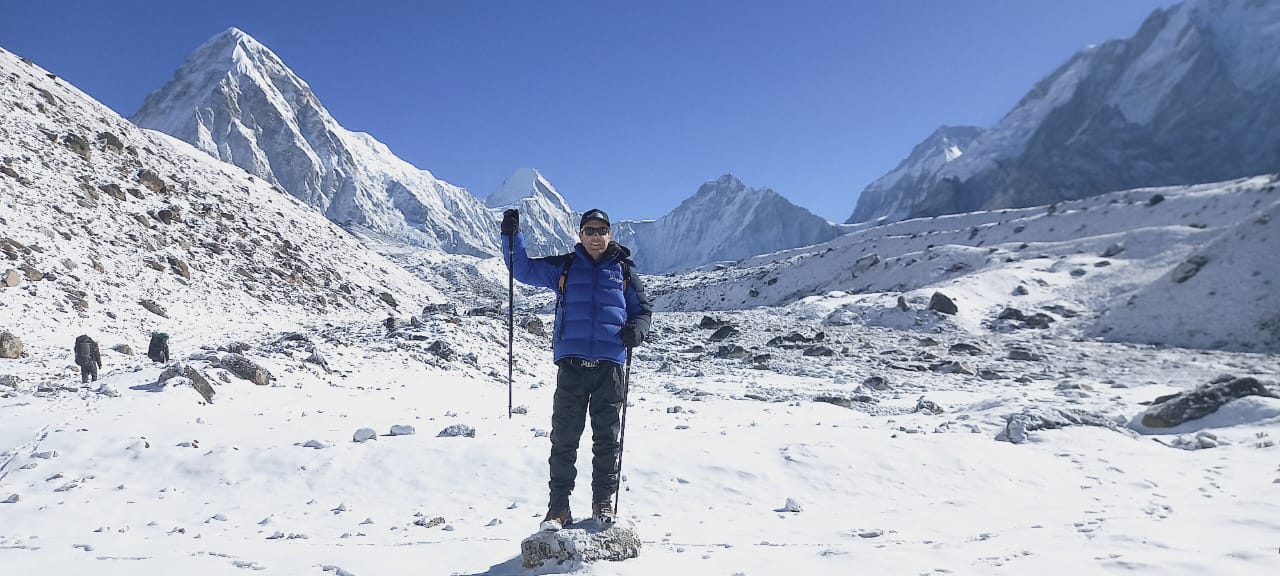
ISLAND AND LOBUCHE PEAK CLIMBING
Lobuche and Island Peak combo climbing expedition is a thrilling adventure that offers a unique opportunity to conquer two popular peaks in the Everest region of Nepal. Lobuche Peak (6,119m) and Islan...
Difficulty Level and Technicality
Lobuche Peak is considered a challenging climb, suitable for climbers with prior high-altitude trekking and basic mountaineering experience. The East Peak is more technically demanding than the West Peak, requiring proficiency in glacier travel, ice climbing, and crevasse navigation.
Climbers should be prepared for steep ascents, icy conditions, and variable weather patterns typical of high-altitude climbs in the Himalayas. The ascent to the summit involves sections of moderate to steep gradient, requiring physical stamina, mental resilience, and effective teamwork.
Best Time to Climb Lobuche Peak
March is regarded as one of the best times to climb Lobuche Peak due to favorable weather conditions and fewer crowds compared to peak seasons. The weather in March is generally stable, with temperatures starting to warm up as the region transitions from winter to spring.
Clear skies and minimal precipitation enhance visibility and climbing conditions, allowing climbers to enjoy unobstructed views of the majestic Himalayan peaks. The trails and climbing routes are less crowded, providing a quieter and more immersive experience amidst the pristine mountain environment.
Choosing March for climbing Lobuche Peak also aligns with optimal acclimatization schedules, minimizing the risk of altitude-related illnesses and maximizing climbers' chances of a successful summit bid. The combination of favorable weather, scenic beauty, and manageable climbing conditions makes March a preferred month for adventurous mountaineers seeking to conquer Lobuche Peak.

LOBUCHE PEAK SUMMIT RETURN BY HELICOPTER
A real climbing adventure that will leave you stunned at the beauty of the Himalayan Mountains. The Lobuche Peak Climbing expedition in the spectacular Khumbu region of Nepal has been ranked by Lonely...
Weather Conditions in March
March in the Everest region, including Lobuche Peak, experiences transitional weather as winter gives way to spring. Daytime temperatures at lower altitudes can range from around 0°C to 10°C (32°F to 50°F), while higher up in the mountains, temperatures can drop significantly, often ranging between -10°C to -20°C (14°F to -4°F) or even lower at night.
The weather in March is generally stable with clear skies, making it an excellent time for climbing. However, climbers should be prepared for occasional snow showers or light precipitation, especially at higher altitudes. Winds can pick up, particularly in exposed areas, affecting wind chill factors and perceived temperatures.
Temperature and Climate Expectations
On Lobuche Peak in March, climbers can expect varying temperatures depending on the altitude and time of day. During daytime ascents and while trekking through lower elevations, temperatures may be relatively mild, requiring layered clothing for comfort and adaptability to changing weather conditions.
As climbers ascend to higher altitudes towards Lobuche Base Camp and High Camp, temperatures typically decrease. Nighttime temperatures can be significantly colder, necessitating insulated clothing and sleeping gear rated for sub-zero conditions to stay warm and comfortable during rest periods.
Day-by-Day Itinerary for March Climbing
The day-by-day itinerary for climbing Lobuche Peak in March spans approximately 15 days, accommodating acclimatization and variable weather conditions. Starting with a flight from Kathmandu to Lukla, climbers trek through iconic Sherpa villages like Namche Bazaar and Tengboche, gradually ascending towards Lobuche Base Camp.
Days are structured to allow for acclimatization stops at strategic points, ensuring climbers adjust safely to increasing altitudes. From Lobuche Base Camp, climbers move to High Camp for further acclimatization and preparation before attempting the summit.
The final ascent to Lobuche Peak involves an early morning start to capitalize on favorable weather conditions and clear visibility. After reaching the summit, climbers descend back to Base Camp and continue their trek back to Lukla before returning to Kathmandu.

LOBUCHE PEAK EXPEDITION 14 DAYS
The Lobuche Peak Expedition is a 14-day trekking adventure that takes you to the heart of the Khumbu region in Nepal. It is a popular trekking peak in the Himalayas, with stunning views of the surroun...
Essential Climbing Gear and Equipment
Climbing Lobuche Peak in March requires a comprehensive set of essential gear and equipment to ensure safety, comfort, and performance throughout the expedition. Key items include:
- Clothing: Layered clothing system including base layers, insulated mid-layers, and waterproof outer shells. Insulated gloves, thermal socks, and headwear like balaclavas or beanies to protect against cold and wind chill.
- Footwear: Sturdy, insulated mountaineering boots with crampon compatibility for traction on icy terrain.
- Climbing Equipment: Crampons for traction on snow and ice, ice axe for self-arrest and stability, harness, ropes, and carabiners for safety during glacier travel and steep ascents.
- Sleeping Gear: Down or synthetic sleeping bag rated for sub-zero temperatures, insulated sleeping pad, and four-season tent for shelter from cold and wind.
- Navigation and Communication: GPS device, maps, and compass for route navigation, along with a satellite phone or two-way radio for emergency communication.
- Personal Gear: Sunglasses with UV protection, sunscreen, lip balm, first aid kit with cold-related injury supplies, and high-energy snacks for nutrition and hydration.
Each piece of equipment is chosen for its durability, functionality, and suitability for high-altitude winter conditions on Lobuche Peak, ensuring climbers are well-prepared for the challenges and rewards of this Himalayan adventure in March.
Acclimatization and Altitude Sickness Prevention
Acclimatization is crucial when climbing Lobuche Peak to mitigate the risks associated with high altitude. Starting the journey in Lukla after a flight from Kathmandu allows for gradual acclimatization through the trekking route, which includes stops in Sherpa villages like Namche Bazaar and Dingboche. These breaks at various altitudes help climbers adjust to the decreasing oxygen levels and prepare their bodies for the challenges ahead.
Altitude sickness, including symptoms like headaches, nausea, and fatigue, can be prevented by ascending slowly, maintaining adequate hydration, and listening to the body's signals. Climbers are advised to follow a conservative ascent profile and consider taking medication like acetazolamide (Diamox) to aid in acclimatization.
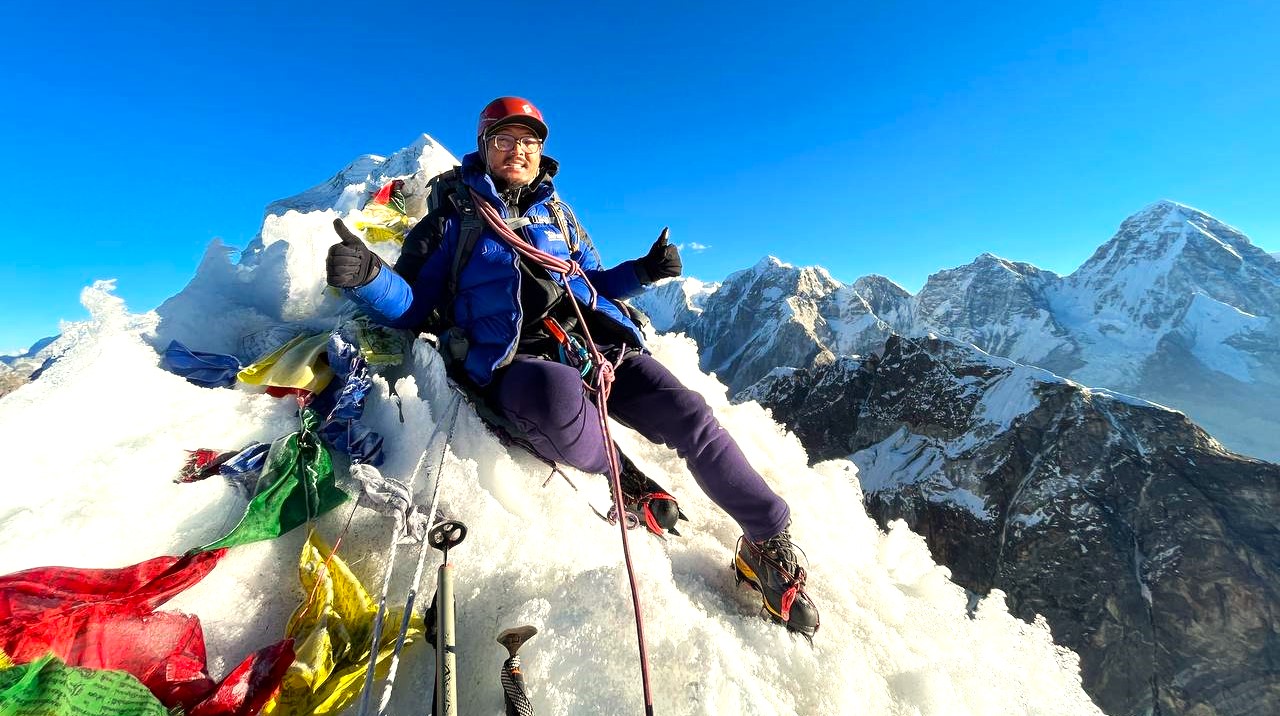
LOBUCHE PEAK EXPEDITION 15 DAYS
Lobuche Peak Expedition is a thrilling adventure that takes you to the heart of the Khumbu region in Nepal. The peak stands at an altitude of 6,119 meters and offers stunning views of the surrounding...
Physical Conditioning and Training Requirements
Preparing physically for Lobuche Peak involves building endurance, strength, and cardiovascular fitness. Training should focus on aerobic exercises such as hiking, running, and cycling to improve stamina and lung capacity. Strength training for core muscles and legs enhances stability and endurance during steep ascents and descents.
Simulating altitude conditions through training hikes at higher elevations or using altitude training systems can help acclimate the body to lower oxygen levels. Mental preparedness is also crucial, as climbing at high altitudes requires focus, determination, and resilience in challenging conditions.
Hiring a Guide or Joining a Group Expedition
Hiring a qualified guide or joining a group expedition is highly recommended for climbing Lobuche Peak, especially for those with limited mountaineering experience or unfamiliarity with the Himalayan terrain. Guides offer invaluable expertise in route navigation, weather assessment, and emergency response.
Experienced guides are familiar with the nuances of high-altitude climbing, including acclimatization strategies and safety protocols. They ensure climbers adhere to local regulations and cultural sensitivities while maximizing the chances of a successful summit bid.
Group expeditions provide camaraderie and mutual support among climbers, enhancing safety and enjoyment throughout the journey. Sharing logistics and costs with a group can also be more cost-effective than a solo expedition.
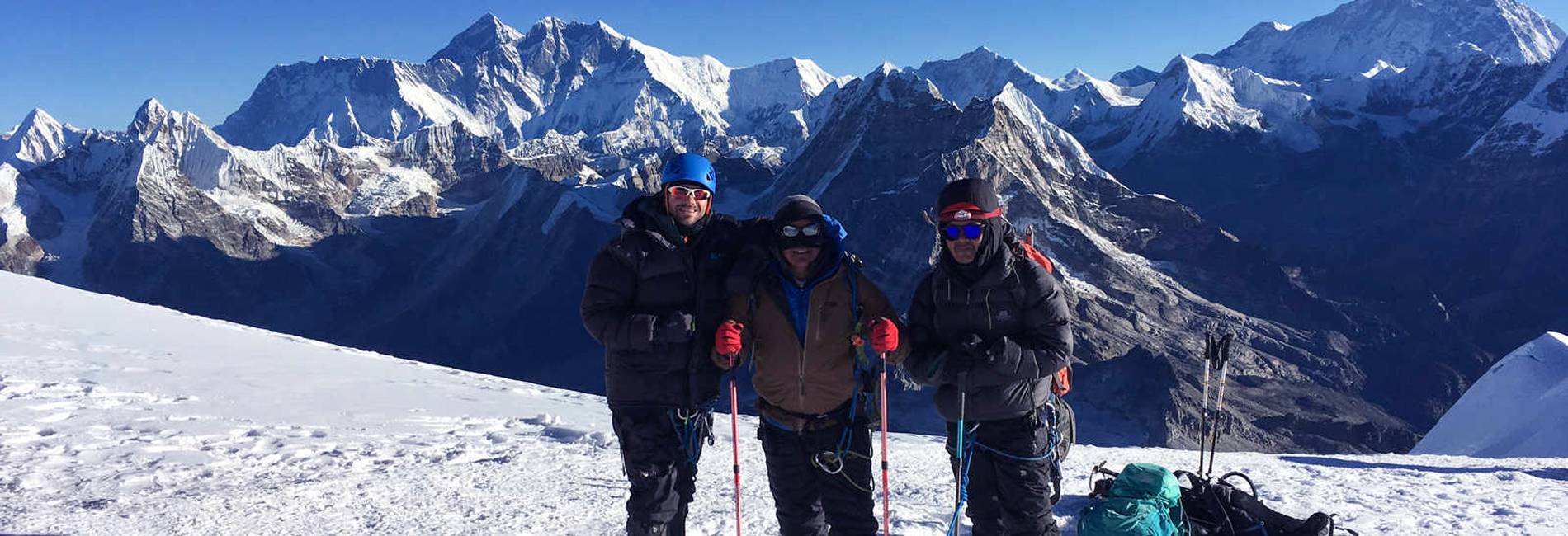
MERA PEAK CLIMBING
Mera Peak Climbing is an exhilarating adventure in Nepal that gives you an opportunity to reach the summit of Mera Peak at more than 6400m above sea level. Actually, it is the highest climbing (w...
Cost and Budget Breakdown for the Climb
The cost of climbing Lobuche Peak varies depending on several factors, including guide services, permits, equipment rental or purchase, accommodation, meals, and transportation. On average, a guided expedition with reputable outfitters ranges from $2,500 to $5,000 per person.
Additional expenses may include international flights to Kathmandu, travel insurance covering high-altitude mountaineering, visa fees, tips for guides and support staff, and personal gear purchases. Budgeting for unforeseen expenses or extended stays due to weather delays is also advisable.
Permits and Regulations for Climbing Lobuche Peak
Obtaining permits and adhering to regulations is essential for climbing Lobuche Peak. Climbers need a permit issued by the Nepal Mountaineering Association (NMA), which specifies the climbing period, route, and fees. Permits for Lobuche East and Lobuche West differ slightly in cost and regulations.
Respecting local customs and environmental guidelines, such as waste management and campsite regulations, fosters sustainable tourism practices. Working closely with guides or expedition organizers ensures compliance with permit requirements and enhances safety and enjoyment of the climbing experience.
Accommodation Options in Kathmandu and Base Camp
In Kathmandu, climbers preparing for Lobuche Peak have a range of accommodation options catering to various budgets and preferences. From budget guesthouses to luxury hotels, Kathmandu offers comfortable lodging with amenities like WiFi, hot showers, and dining facilities. Thamel, a popular tourist district, is a hub for accommodations conveniently located near gear shops and expedition outfitters.
At Lobuche Base Camp, accommodation options are more basic, typically consisting of tents provided by expedition teams or trekking agencies. These campsites offer essential facilities such as dining tents and portable toilets. Sleeping arrangements include insulated sleeping bags and mats to stay warm in the mountain environment.
Food and Water Arrangements during the Climb
During the climb to Lobuche Peak, food and water arrangements are meticulously planned to support climbers' nutritional needs and hydration. In Kathmandu, climbers can enjoy a variety of international and local cuisine, including Nepali dal bhat (rice and lentils) and momos (dumplings).
On the trek to Lobuche Base Camp, meals are provided at teahouses along the route, offering hearty meals like pasta, rice dishes, and soups. These meals are designed to replenish energy and maintain stamina during the trekking phase.
At higher altitudes and during the climbing phase, meals are prepared by expedition cooks at base camps and high camps. Menus typically include a balance of carbohydrates, proteins, and fats to fuel climbers for strenuous climbs. Clean drinking water is essential and sourced from treated or boiled water provided by the expedition team.

ISLAND PEAK CLIMBING
Sherpa Expedition & Trekking (Est.1977) are pleased to announce FOR ADVENTURERS the most awesome, exhilarating & unforgettable climbing and treks on offer anywhere today!...
Safety Measures and Emergency Protocols
Safety on Lobuche Peak is prioritized through stringent measures and emergency protocols. Guides and expedition leaders are trained in first aid, altitude sickness prevention, and emergency response. Climbers are briefed on safety procedures, including use of safety equipment like ropes, harnesses, and helmets.
Emergency communication devices such as satellite phones or radios are carried to maintain contact with support teams in Kathmandu or local rescue services. Weather conditions are closely monitored, and climbing plans adjusted accordingly to ensure safety.
Environmental Impact and Responsible Climbing Practices
Climbing Lobuche Peak responsibly involves minimizing environmental impact and preserving the fragile mountain ecosystem. Leave No Trace principles are followed, including packing out all waste, using biodegradable soap, and respecting local flora and fauna.
Climbers support local communities by patronizing teahouses and buying supplies locally. Sustainable practices like reducing single-use plastics and conserving water are encouraged to protect natural resources.
Cultural Significance of Lobuche Peak to the Local Community
Lobuche Peak holds cultural significance to the local Sherpa community, embodying their spiritual beliefs and heritage. It is regarded as a sacred mountain, with rituals performed by Sherpas before climbing expeditions to seek blessings for safe passage and successful climbs.
The peak's prominence in local folklore and traditions underscores its importance as a symbol of resilience and reverence in the Sherpa culture. Climbers are encouraged to respect these traditions and engage respectfully with local communities during their journey.

YALA PEAK CLIMBING
Don’t let the height frighten you (5520m). This is a non-technical climb that will afford views for miles and miles in the Langtang region of Nepal. From the summit, you can see Mt. Sishapangma...
Conclusion: Is Climbing Lobuche Peak in March Right for You?
Climbing Lobuche Peak in March offers a thrilling adventure amidst favorable weather conditions and stunning Himalayan landscapes. It requires physical fitness, mental preparedness, and a spirit of adventure to conquer its challenging terrain and high-altitude conditions.
If you are an experienced mountaineer seeking a rewarding expedition with clear skies, milder temperatures, and fewer crowds than peak seasons, March could be an ideal time for you. Ensure proper training, acclimatization, and safety precautions to maximize your chances of a successful summit and unforgettable experience in Nepal's majestic Everest region.
Lobuche Peak Climbing Packages
Lobuche Peak Summit Return By Helicopter
Lobuche Peak Expedition 14 Days
Lobuche Peak Expedition 15 Days

CHULU FAR EAST PEAK CLIMBING
Are you looking for adventure, natural beauty, magnificent snow-capped peaks, and unique cultural experience?This Peak Climbing will give you all the thrills, variety, and the adrenalin rush as you cl...
Any Questions? Let Us Know.
Recent Posts
17th June, 2025


















